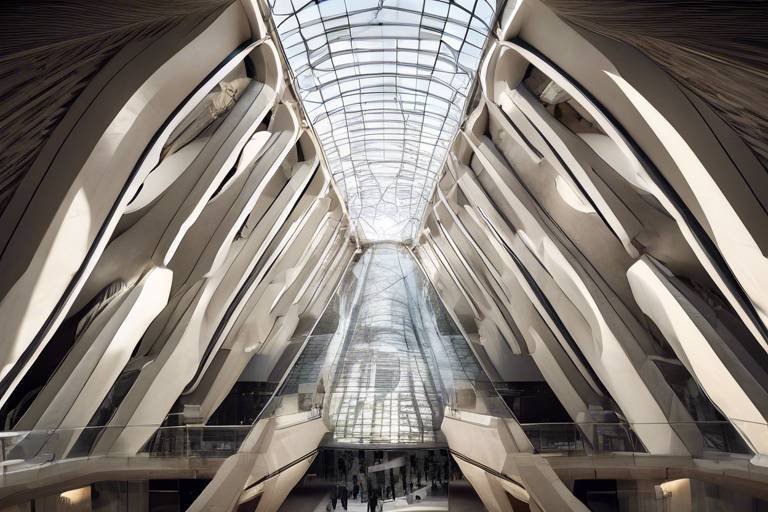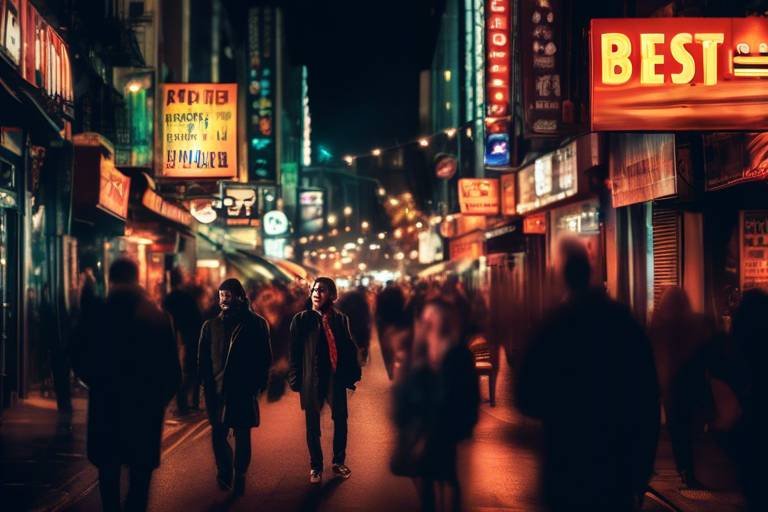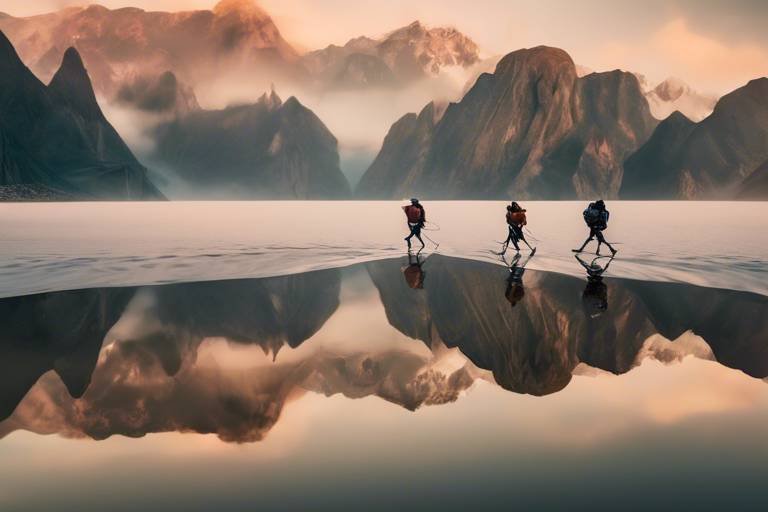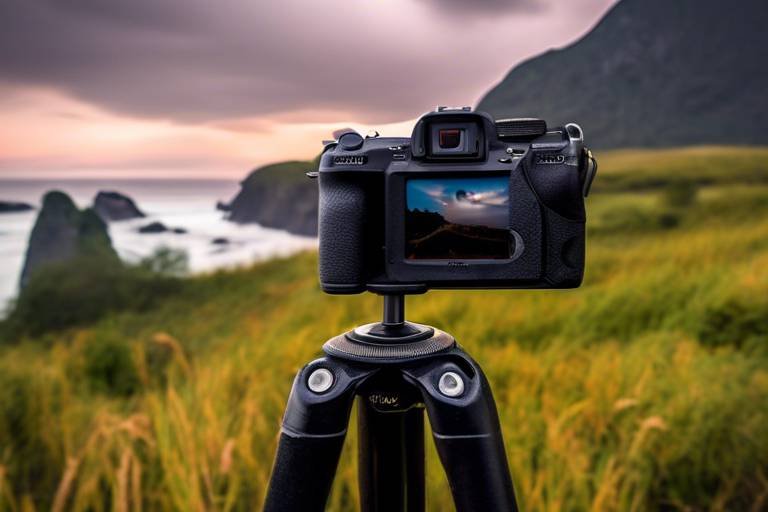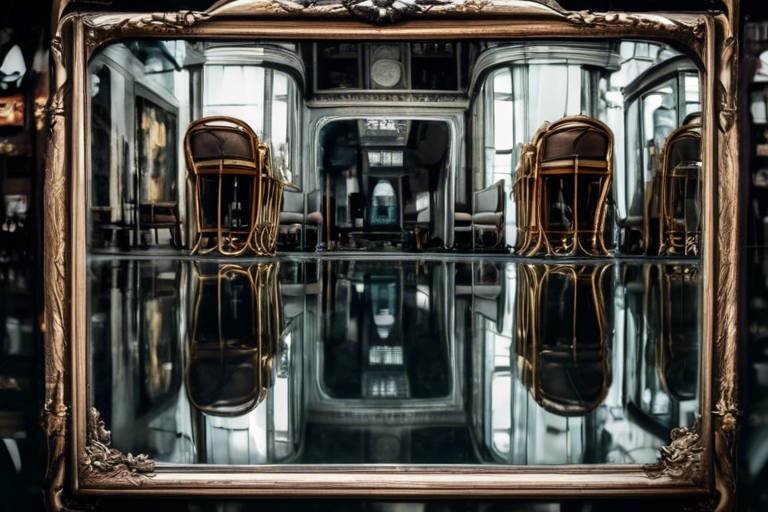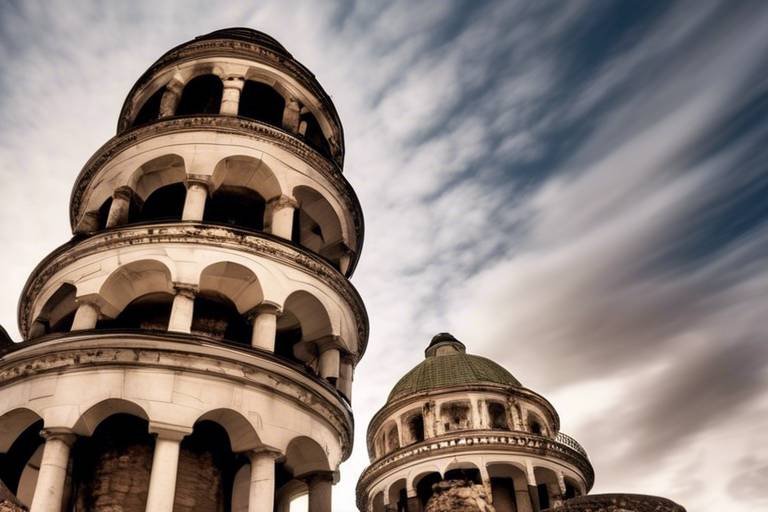Best Techniques for Capturing Architectural Wonders
Architectural photography is a captivating art form that allows us to capture the magnificence and essence of architectural wonders through the lens of a camera. It requires a keen eye for detail, an understanding of light and shadow, and a creative approach to composition. In this article, we will delve into the best techniques for capturing architectural marvels, from mastering lighting to exploring different angles and post-processing tips.

Understanding Lighting
When it comes to architectural photography, understanding lighting is crucial for capturing the true essence and beauty of a structure. Lighting plays a significant role in highlighting the textures, shapes, and intricate details of buildings, ultimately enhancing the overall visual impact of your photographs. Whether it's natural sunlight casting dramatic shadows or strategically placed artificial lights illuminating specific architectural elements, the right lighting can make all the difference in creating stunning images.
One key tip for utilizing lighting effectively in architectural photography is to pay attention to the direction and quality of light. Soft, diffused light can help showcase subtle details and textures, while harsh light can create dynamic contrasts and shadows. Experimenting with different lighting sources and angles can add depth and dimension to your photos, bringing out the unique characteristics of each architectural wonder.
Moreover, understanding how light interacts with various materials and surfaces can also influence the mood and atmosphere of your photographs. Reflections on glass facades, shadows cast on stone walls, or the warm glow of sunset on a building's facade can all contribute to creating compelling and visually engaging architectural images.
By mastering the art of lighting in architectural photography, you can elevate your photos from mere snapshots to captivating visual stories that showcase the grandeur and beauty of architectural marvels.

Composition and Framing
When it comes to architectural photography, composition and framing play a crucial role in capturing the essence and beauty of iconic structures. The way you frame your shots can make a significant difference in the impact of your photographs. By carefully considering the elements within your frame, you can create visually striking images that draw the viewer in and highlight the grandeur of the architecture.
One essential technique in composition is creating symmetry within your shots. Symmetry can help bring a sense of balance and harmony to your photographs, enhancing the overall aesthetic appeal. Additionally, leading lines can be used to guide the viewer's eye through the image, drawing attention to key architectural features and creating a sense of depth.
Exploring different perspectives and angles is another key aspect of composition. By experimenting with various angles, you can showcase the unique characteristics of a building and create dynamic compositions that evoke a sense of awe. Whether shooting from ground level to emphasize the scale of a structure or capturing it from above to show its intricate details, each angle offers a new perspective on the architectural wonder.
Furthermore, incorporating perspective into your compositions can add depth and dimension to your photographs. By playing with angles and viewpoints, you can create images that not only showcase the beauty of the architecture but also convey a sense of space and volume. This technique can help bring a three-dimensional quality to your two-dimensional photographs, making them more engaging and immersive.
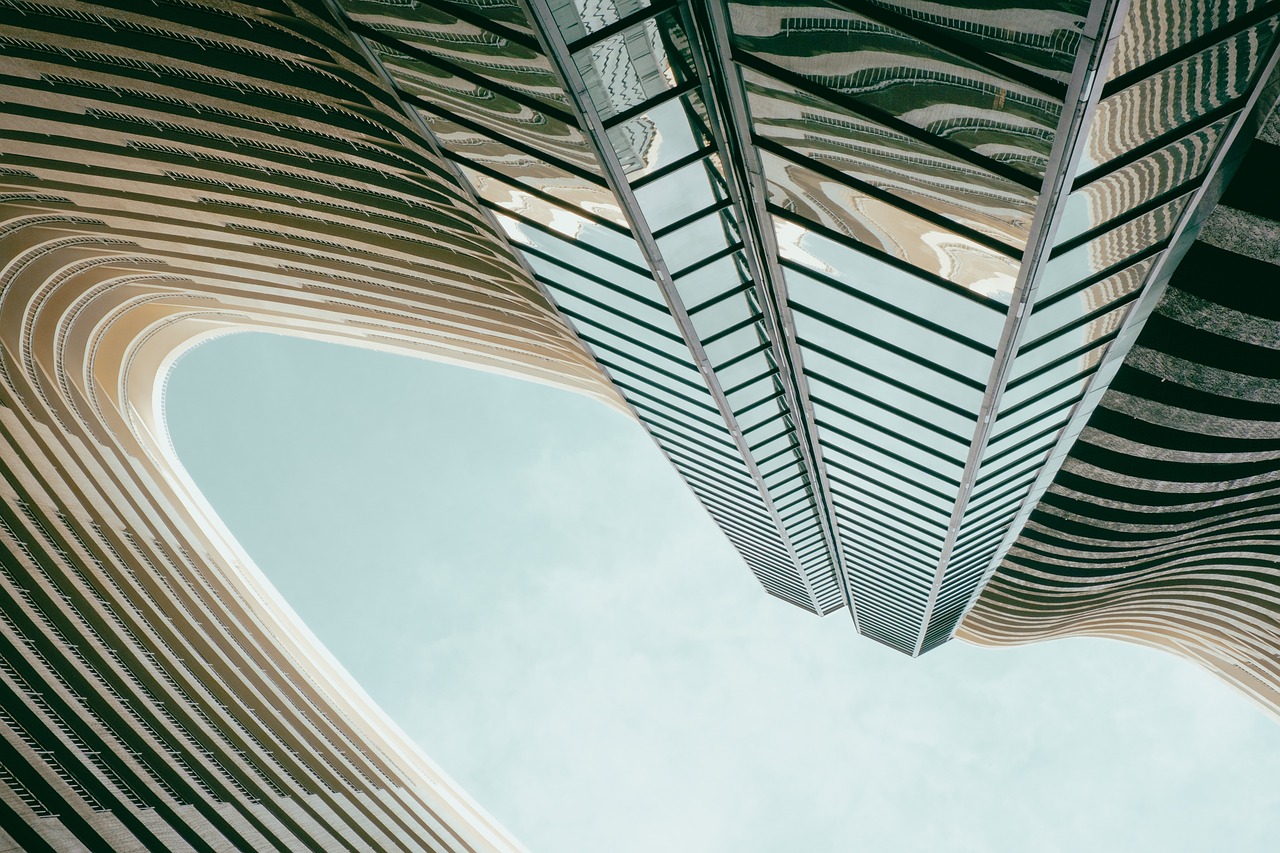
Utilizing Reflections and Shadows
When it comes to capturing architectural wonders, reflections and shadows can be powerful tools in creating visually striking images. By understanding how to utilize reflections and shadows effectively, you can add depth and dimension to your photographs, enhancing the overall impact of your architectural compositions.
One technique to enhance your architectural photography is to take advantage of water reflections. Bodies of water such as ponds, lakes, or even puddles can act as natural mirrors, reflecting the architecture above and creating a captivating visual effect. By positioning yourself strategically, you can capture stunning reflections that add a unique element to your photographs.
Additionally, glass surfaces present another opportunity to play with reflections. Modern buildings often feature sleek glass facades that reflect the surrounding environment, creating a blend of the architectural structure and its surroundings. Experimenting with different angles and perspectives can result in dynamic compositions that showcase both the building itself and its reflective properties.
Shadows, on the other hand, can be used to add drama and contrast to architectural photographs. By paying attention to the direction and intensity of light, you can create bold shadow patterns that emphasize the shapes and textures of buildings. Shadows can also help define the architectural details, adding a sense of mystery and intrigue to your images.
Strategic positioning is key when working with reflections and shadows. By moving around the architectural subject and observing how light interacts with different surfaces, you can find the optimal angles to capture compelling reflections and shadows. Experiment with various lighting conditions to see how they influence the mood and atmosphere of your photographs.
Remember, reflections and shadows are not just elements to be avoided or corrected in photography; they can be harnessed creatively to elevate your architectural images to a new level of artistry. Embrace the interplay of light and shadow, experiment with different surfaces, and let reflections and shadows tell a story within your architectural compositions.

Exploring Different Angles
When it comes to capturing architectural wonders, exploring different angles can truly elevate your photography game. By venturing beyond the standard frontal view, you open up a world of creative possibilities that can make your images stand out. Imagine capturing a towering skyscraper from a low angle, emphasizing its height and grandeur, or shooting a historic building from above to showcase its intricate rooftop details. Each angle tells a unique story and allows you to present architectural marvels in a fresh and captivating way.
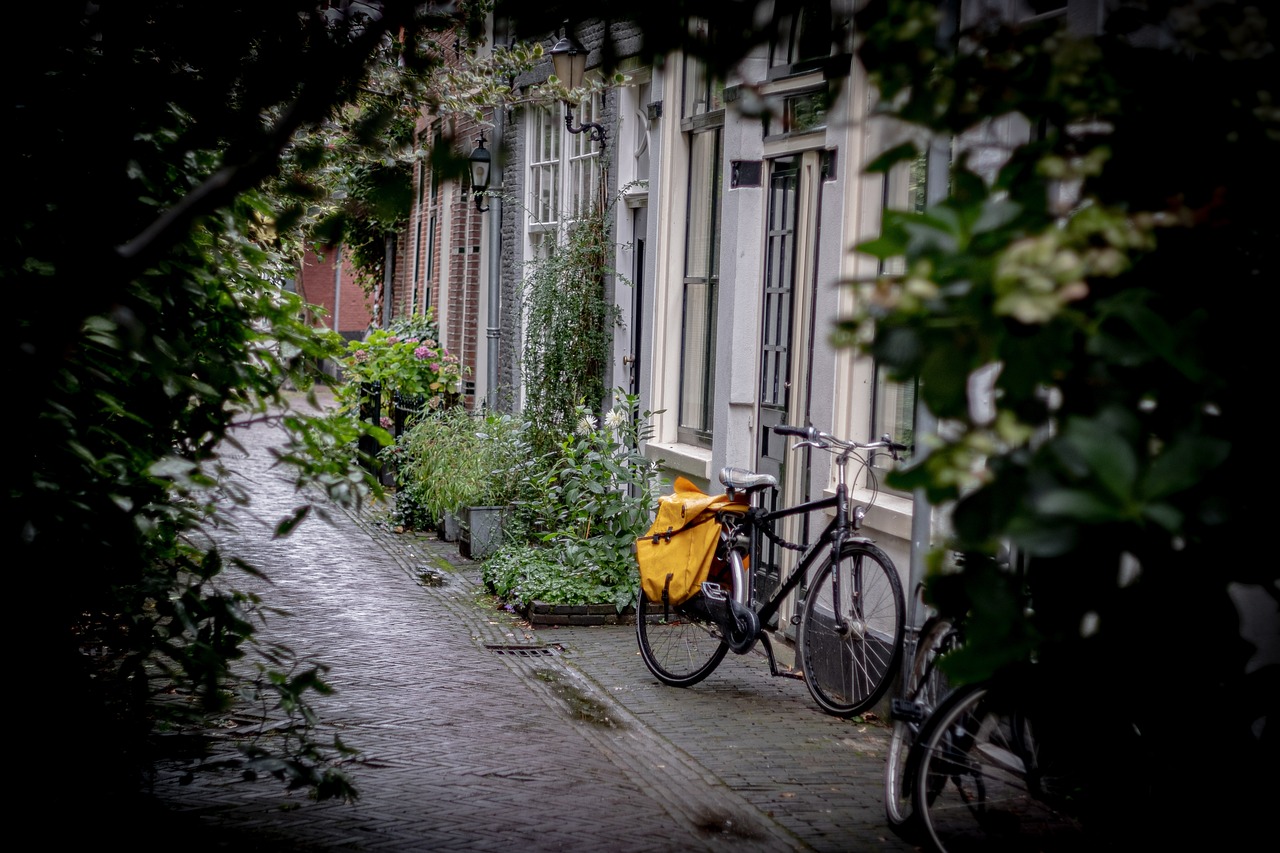
Post-Processing Tips
Exploring photography tips and tricks to capture the beauty and essence of architectural marvels. From lighting techniques to composition strategies, learn how to enhance your architectural photography skills and create stunning images of iconic structures.
When it comes to enhancing your architectural photographs after the initial capture, post-processing plays a crucial role in refining and perfecting the images. One essential tip is to pay close attention to color correction. Adjusting the colors in your photographs can significantly impact the overall mood and visual appeal of the architectural elements. Additionally, focusing on contrast can help bring out the details and textures of the buildings, creating a more dynamic and engaging image.

Capturing Details and Textures
When it comes to capturing architectural wonders, paying attention to the intricate details and textures can truly elevate your photographs to a whole new level. By focusing on the small elements that make up a building, you can showcase the craftsmanship and beauty that often go unnoticed. One effective technique is to take close-up shots that highlight the patterns, materials, and surfaces of the architecture.
Textures play a vital role in adding depth and visual interest to your images. Whether it's the rough surface of weathered stone or the smooth finish of modern glass facades, textures can create a tactile experience for the viewer. By emphasizing these textures through careful framing and composition, you can draw the viewer's eye and evoke a sense of touch through the visual medium.
Consider experimenting with different angles and perspectives to capture the textures in a unique way. Shooting from below to accentuate the height of a building or getting up close to reveal intricate details can offer fresh insights into the architectural elements. Utilizing natural light to cast shadows and highlights on textures can also create a sense of depth and dimension in your photographs.
Furthermore, incorporating textures into your compositions can help tell a story about the building itself. Whether it's the weathered facade of an ancient structure or the sleek surfaces of a modern skyscraper, textures can convey the history, character, and purpose of the architecture. By capturing these details, you can create a visual narrative that goes beyond mere documentation.
Remember, details and textures are not just elements of a building; they are opportunities to add layers of meaning and visual interest to your architectural photographs. By honing your eye for these small but significant aspects, you can create images that not only showcase the beauty of the architecture but also invite viewers to explore and appreciate the intricacies of the built environment.
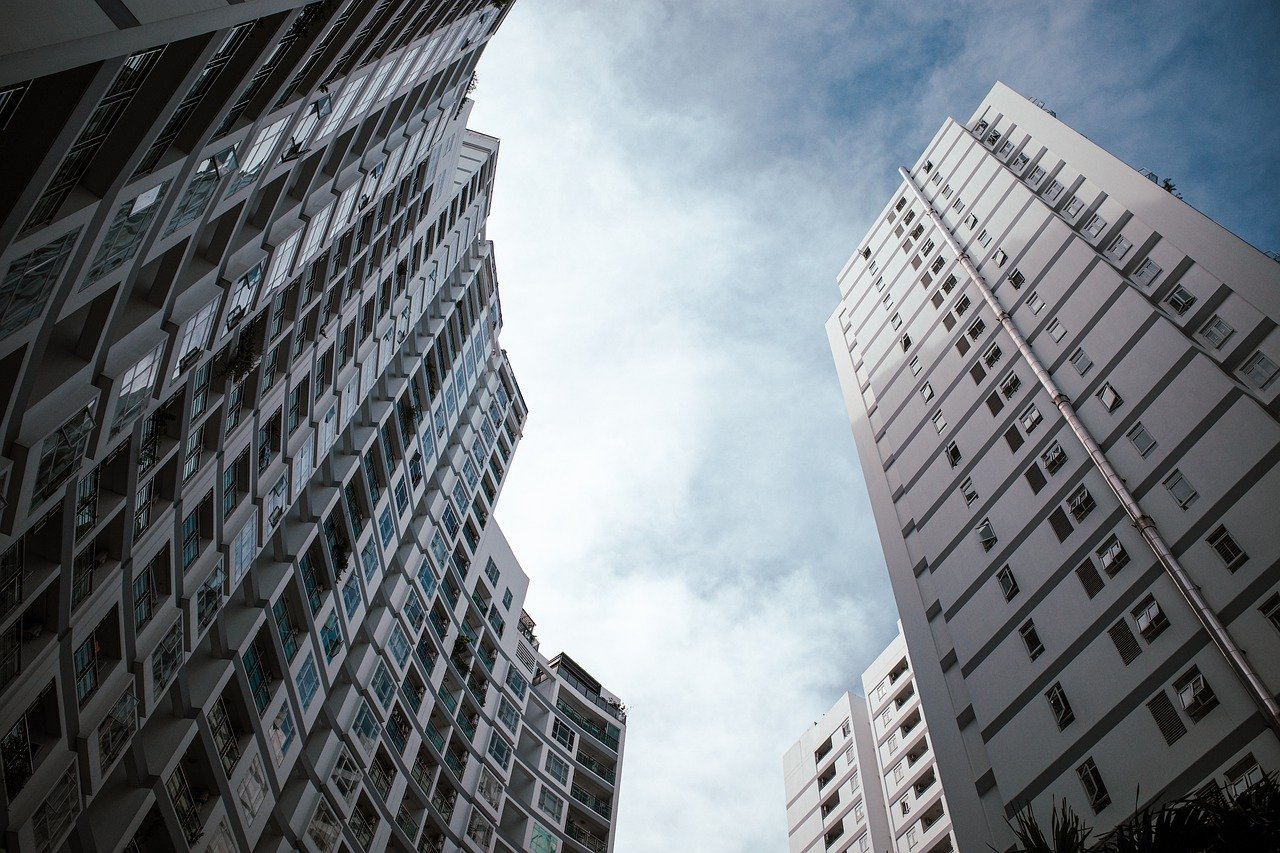
Embracing Minimalism
Embracing minimalism in architectural photography involves stripping away the unnecessary clutter and focusing on the essential elements that define a structure's beauty. By simplifying compositions and removing distractions, photographers can create images that are elegant, impactful, and visually striking. Minimalist photography allows the architectural wonders to speak for themselves, highlighting their unique features and design aesthetics.
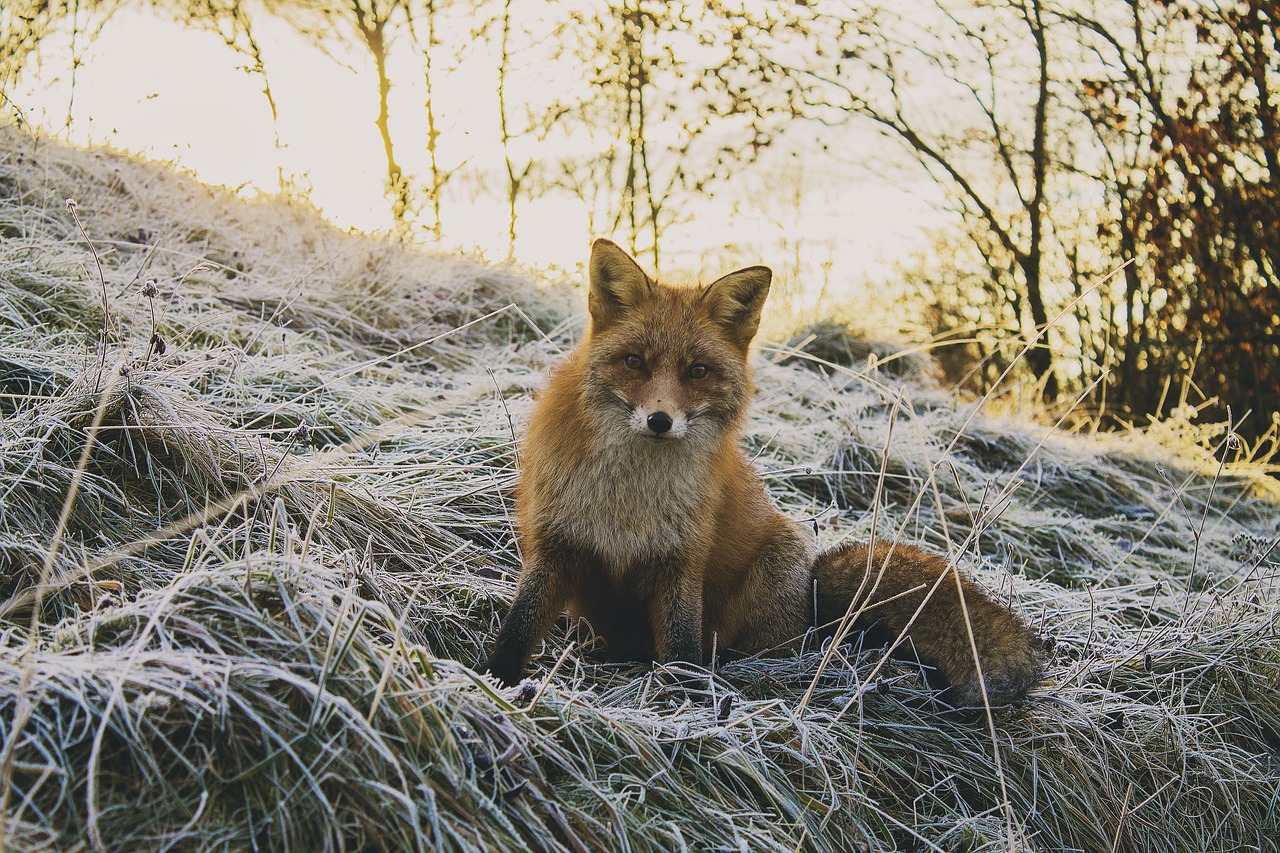
Storytelling Through Architecture
Storytelling through architecture is a powerful way to communicate narratives and evoke emotions through visual imagery. Just like a skilled writer weaves a story with words, a photographer can tell a compelling tale through capturing architectural marvels. Each building, each structure has a story to tell, whether it's the rich history behind ancient ruins or the modern narrative of futuristic skyscrapers.
When photographing architecture with the intention of storytelling, it's crucial to pay attention to the details that convey the essence of the place. Every element within a building, from intricate carvings to modern facades, can serve as a character in the narrative you're trying to create. By focusing on these details, you can draw the viewer into the story and make them feel like they are part of the architectural experience.
Moreover, architecture is deeply intertwined with culture and society, reflecting the values and beliefs of the people who built it. By capturing the human interactions within architectural spaces, you can add a layer of depth to your photographs. Whether it's a bustling market square, a serene courtyard, or a contemplative library, these spaces are filled with stories waiting to be told.
Furthermore, architectural photography can also highlight the historical significance of a place, showcasing its evolution over time. From ancient ruins that whisper tales of past civilizations to modern structures that symbolize progress and innovation, each architectural wonder has a unique story to share. By framing your shots to include elements that hint at the passage of time, you can create a sense of continuity and change within your photographs.
In essence, storytelling through architecture is about capturing the soul of a place and translating it into visual narratives that resonate with viewers. By infusing your photographs with emotion, context, and meaning, you can create images that not only showcase the beauty of buildings but also invite viewers to embark on a journey through the stories woven within architectural wonders.
Frequently Asked Questions
- What camera gear is recommended for architectural photography?
For architectural photography, it is recommended to use a DSLR or mirrorless camera with a wide-angle lens to capture the grandeur of buildings. Tripods are essential for stability, especially in low light conditions, and a remote shutter release can help minimize camera shake.
- How important is post-processing in architectural photography?
Post-processing plays a crucial role in enhancing architectural photographs. It allows you to adjust colors, contrast, and perspective, as well as remove distractions or correct imperfections to bring out the best in your architectural images.
- What are some tips for capturing architectural details?
To capture intricate details of architectural elements, focus on close-up shots, textures, and patterns. Pay attention to light and shadows to emphasize the craftsmanship and unique features of buildings.
- How can architectural photography tell a story?
Architectural photography can convey stories and emotions by capturing the historical significance, cultural context, and human interactions within architectural spaces. By framing shots creatively and exploring different angles, you can create compelling narratives through your photographs.

